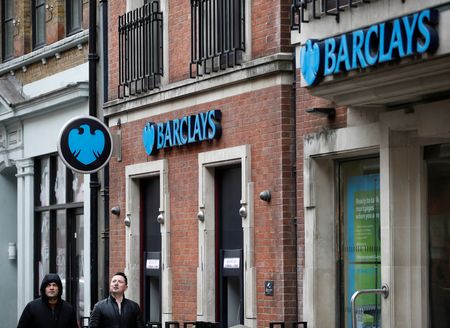
By Saqib Iqbal Ahmed
NEW YORK (Reuters) – Days before Thanksgiving, Kris Sidial, a co-founder at volatility arbitrage fund The Ambrus Group, told investors the firm was betting that extreme price moves in some volatility-tracking exchange traded notes were likely to get worse.
The firm bought deep out-of-the-money call options on the iPath Series B S&P 500 VIX Short-Term Futures ETN – relatively inexpensive contracts that had a low chance of making money but stood to explode in value if the share price were to soar.
This week, VXX shares jumped as much as 60% over the course of two trading days.
The firm, which has an estimated $35 million to $55 million under management, is yet to close out its VXX positions, Sidial said. He declined to give details of the trade but said, at the peak of VXX’s rise, the firm’s percentage gains were in the double digits month-to-date.
VXX shares soared for a second day on Tuesday, a day after British bank Barclays said it had suspended the sales and issuance of the shares due to capacity constraints.
Sidial believed Cboe Options Exchange’s decision in November to extend trading hours on S&P 500 and Cboe Volatility Index options to nearly 24 hours each business day had the potential to spur bigger price swings for some ETNs that seek to track volatility.
“Call buyers of derivatives on these exchange traded products may get very lucky,” he wrote to investors in a Nov. 22 letter seen by Reuters.
Global financial markets have seen a sharp rise in volatility, with big price swings in stocks and commodities, as the Russia-Ukraine conflict spooks investors and the U.S. Federal Reserve gets set to raise interest rates for the first time in three years.
Analysts expect VXX shares to still see wild price swings as the ETN’s trading price strays far from its indicative price – where it should be trading based on the value of its underlying securities.
Typically, large banks buy and sell shares to generally keep the trading price of the ETNs in line with their indicative value.
But with the suspension of new shares that process can go awry. On Tuesday, VXX traded as much as $14 higher than its indicative price. The shares finished about flat at $28.70 and is up 9% for the week.
“This is essentially scarcity value, i.e. demand for VXX shares that would otherwise have been met with share creation,” said Matt Thompson, managing partner at Chicago-based investment adviser Thompson Capital Management, which specializes in volatility trading.
Thompson’s firm, which had “some exposure” to VXX sold all of it on Tuesday, he said.
“We don’t want to be around when/if they start issuing shares again,” he said.
Some investors said the recent wild moves in VXX revives memories of another volatility-tracking product – VelocityShares Daily 2x VIX Short-Term ETN, which collapsed nearly 60% over the course of four trading sessions in March 2012, after the ETN’s issuer, Credit Suisse, reopened issuance of shares after a one-month suspension.
Investors who held a bearish view on VXX, meanwhile, are facing sharp losses after the ETN’s surge.
LONG TIME COMING?
Sidial and some others have long worried about the possibility of price dislocations in ETNs, where much of the price stability of these products depends on the ability of authorized participants’ (APs) – typically large banks – to buy and sell shares efficiently.
Even when share issuance has not been suspended, however, APs have occasionally struggled to keep the price stable, as liquidity dries up during episodes of market stress.
Sidial said the ability to make trades at nearly any hour of the day has the potential to exacerbate volatility by allowing market participants to react immediately to potentially negative news, often worsening market liquidity during market shocks.
The Cboe has in the past said the ability to trade S&P 500 and VIX options nearly around the clock would help investors manage risk more efficiently.
“This is something we have been tracking for quite some time,” Sidial said.
(Reporting by Saqib Iqbal Ahmed; Editing by Bernard Orr)

